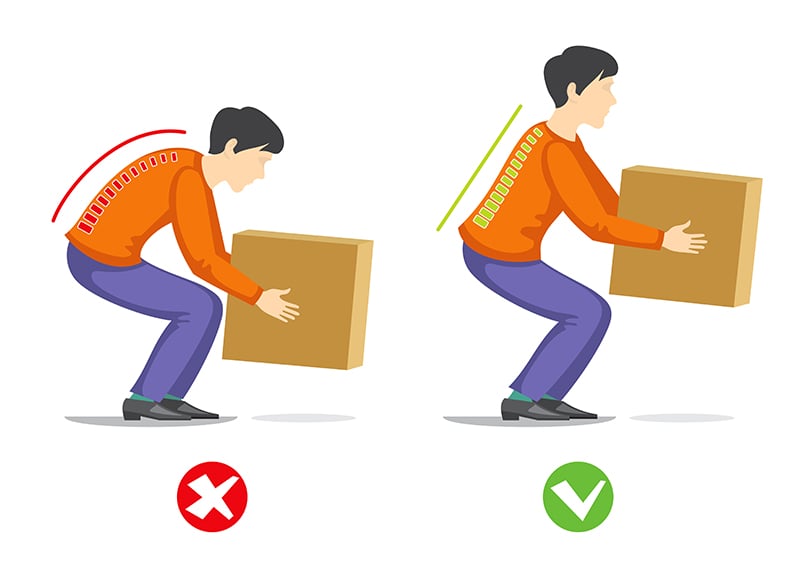Preventing Back Injuries
Safety Moment
- Home
- About Airswift
- Safety
- Safety Moments
- Preventing Back Injuries
How can I prevent a back injury?
Back injuries are the second most common cause of days away from work. However, a lot of workplace incidents can be prevented if you stay alert, know your risks and follow simple safety rules.
What causes back pain or injuries?
A number of factors can contribute to back pain at work, such as lifting heavy objects, repetition involving twisting and rotating your spine and inactivity due to sitting for prolonged lengths of time, especially if you have poor posture sitting in your chair.
Additionally, many back problems are caused from a loss of flexibility, stressful living/working habits and a general decline in physical fitness. Along with correct lifting techniques, we should also work on our overall physical condition. Exercise and flexibility plays an important role in your well-being. As we grow older, we lose our body's full range of motion, so when a sudden physical demand takes a muscle or joint further than it's used to, the risk of injury is high.
Below we review main causes for back pain and provide simple steps to prevent back injuries whether you are sitting at a desk or performing physical activities.
Lifting
Instead of attempting to carry or lift something that is heavy just to save some time during your workday, take an extra minute to use available lifting equipment like a dolly, wheelbarrow, cart or forklift. Too many injury risks are involved with trying to lift something that weighs too much. Try to remember,
Think Twice - Lift Once

Here are a few quick steps to help you with manual handling:
- Plan your route: Do you have a clear path? Are trip hazards removed? Do you have a clear place to put it down?
- Assess the load: Is it too heavy? Should you use a cart, dolly or forklift? Does the load obstruct your view?
- Lift it correctly: Position your body close to the object. Keep your back straight. Bend at the knees.
- Move it correctly: Do not twist your back.
- Lower it correctly: When you put the load down, bend your knees NOT your waist.
By following these steps, you may actually save yourself time carrying out the task and most importantly prevent any potential injury.
Repetition
Some tasks involve repeating the same actions with little variation. Highly repetitive tasks often involve the use of only a few muscles or body parts, while the rest of the body is unaffected. When motions are repeated frequently, there may be inadequate time for muscles and tendons to recover, causing them to become strained and fatigued.
Activities that require repetitive motion include moving items from a low box to a high shelf or picking up items from the floor. The repetition of certain movements and having a slouching posture for too long are both causes of muscle fatigue and injury.

To prevent back injuries due to repetitive tasks, you should modify them as much as you can:
- Use lifting devices when available to help you lift loads.
- Try to alternate physically demanding tasks with less demanding ones.
- If you work at a computer, make sure your monitor, keyboard, mouse and chair are positioned properly.
- If you frequently talk on the phone and type or write at the same time, place your phone on speaker or use a headset.
- Avoid unnecessary bending, twisting and reaching.
- Limit the time you spend carrying heavy items.
- Do mild stretching exercises prior to performing work and take short breaks to stretch and re-adjust your back.
- Avoid sudden, sharp movements that can pull the back muscles.
Inactivity
Sitting down for extended periods of time, especially if your posture is incorrect, can cause back pain. Follow these easy steps to avoid back pain due to inactivity:
- Get up from your desk every 30 minutes: stand, walk or stretch
- Be active while not at work: exercise at least 60 minutes a day to combat the effects of sitting
- Do back stretching exercises regularly
- Keep good posture
Remember: Always listen to your body. If it does not feel right, that's usually a good indicator that something is not right. Your body knows what it can and cannot do, but you should know your limits and ask for help where needed. Be aware of your risks and your surroundings to be able to perform every aspect of your job safely.